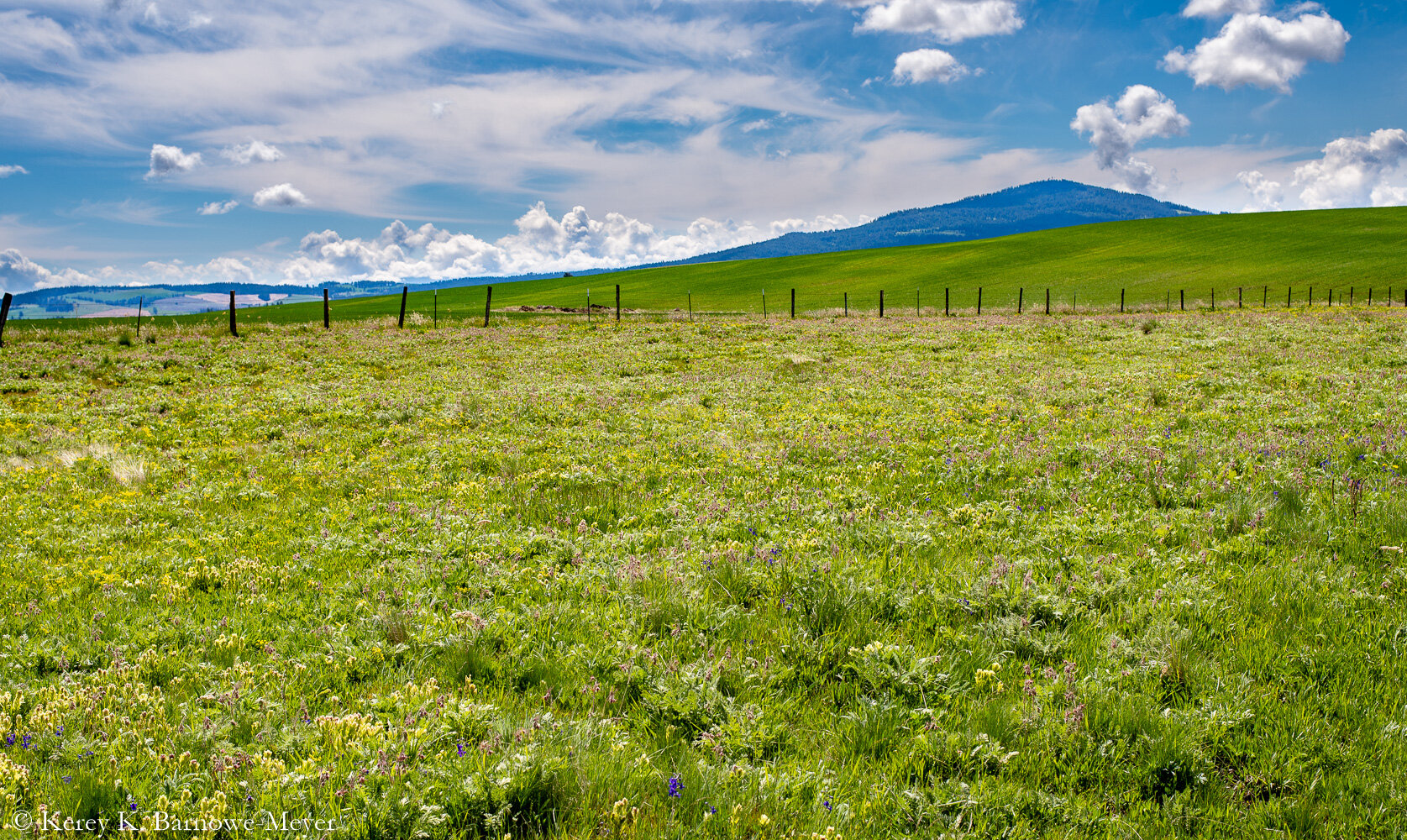
Rare Plant Conservation
Working to preserve, protect, and restore Palouse Prairie and canyon grassland ecosystems.
Prior to European settlement, the Nimiipuu (Nez Perce) utilized the Palouse, Weippe, and Nez Perce Prairies extensively for food and forage resources. Family groups would travel to the prairie to gather seasonally available food, fiber, and medicinal plants. Camas (Camassia quamash) and cous (Lomatium cous) are both important root crops located within the region with major gathering sites near Moscow, Grangeville, Weippe, Craigmont, and Cottonwood (Marshall 1977). Modern land use changes have, however, significantly affected the ability of Nez Perce tribal members to utilize native and cultural plant resources. Food and fiber plants are more difficult to find and sometimes are not available to tribal members due to current land ownership patterns and impacts from modern land management practices. Identifying and managing significant plant resources on existing tribal lands is an important step in perpetuating the cultural traditions of gathering employed by the Nimiipuu since time immemorial.
A series of grants from the US Fish and Wildlife Service has allowed Tribal staff to inventory and map rare plant species occurring on or near the 1863 Reservation and develop conservation measures to help ensure their persistence into the future. Most of the work to date has focused on conserving the Palouse Prairie and canyon grassland ecosystems where the majority of rare plants are found.
Two Tribal Landowner Incentive Program (TLIP) grants awarded to the Nez Perce Tribe by the US Fish and Wildlife Service (in 2004 and 2006) and a Tribal Wildlife Grant (TWG) in 2010 have documented the occurrence of over 296 rare plant locations on tribal lands representing 28 species of plants (hyperlink to rare plant map). All 28 species are imperiled because of rarity or because of other factors demonstrably making them vulnerable to extinction (hyperlink to rare plant table). We have concluded from this body of work that tribal lands containing remnant prairie and canyon grassland communities are critical to the survival of several endemic plant species.
Because of the ecological significance of Palouse Prairie remnants, the US Fish and Wildlife Service provided the tribe funding beginning in 2014 to map, inventory, and assess prairie remnants on the 1863 Reservation. To date, tribal botanists have evaluated over 500,000 acres, mapped approximately 2,163 acres of prairie remnants, and confirmed the ecological status of 1,355 acres of prairie habitat (hyperlink to prairie remnant map). We have also identified 30 core native species (of the 233 total identified) that appear to be commonly found with prairie communities to help drive future restoration efforts.
Tribal botanists also work cooperatively with other Tribal, state, federal, and private partners on regional plant conservation efforts. Of particular note is tribal engagement with the North Idaho Rare Plant Working Group, the Spalding’s Catchfly Technical Recovery Team, Idaho Native Plant Society, the Rae Selling Berry Seed Bank at Portland State University, and the University of Idaho Stillinger Herbarium. The tribe also maintains our own official herbarium (NEZ) containing approximately 1,200 regional plant specimens.

